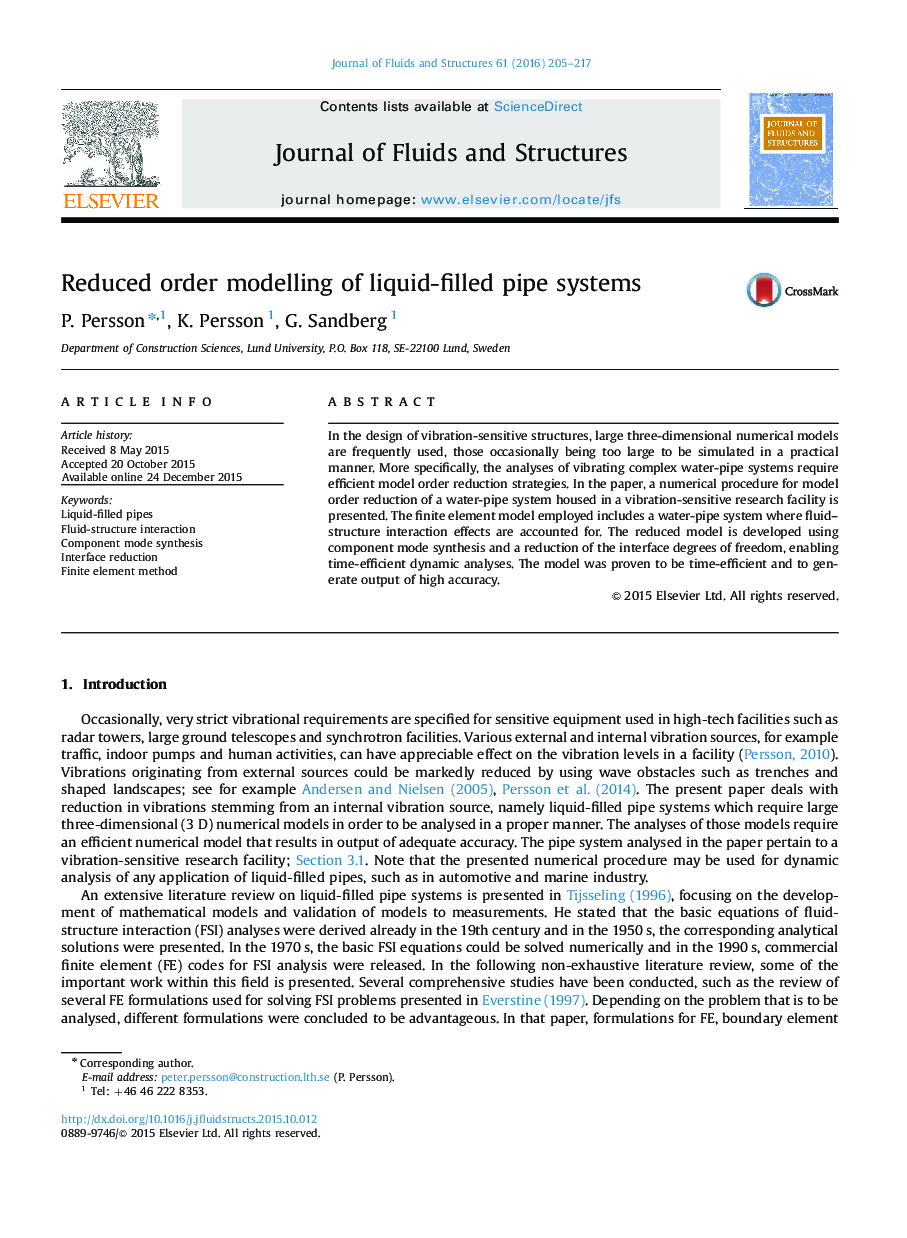| Article ID | Journal | Published Year | Pages | File Type |
|---|---|---|---|---|
| 792292 | Journal of Fluids and Structures | 2016 | 13 Pages |
•CMS in combination with interface reduction results in time-efficient numerical models.•Rigid coupling is preferably used for a soft interface surface.•Due to breathing modes, distributed coupling is preferably used for a pipe interface.•Substructure using several condensation nodes being preferably used if lower errors required.
In the design of vibration-sensitive structures, large three-dimensional numerical models are frequently used, those occasionally being too large to be simulated in a practical manner. More specifically, the analyses of vibrating complex water-pipe systems require efficient model order reduction strategies. In the paper, a numerical procedure for model order reduction of a water-pipe system housed in a vibration-sensitive research facility is presented. The finite element model employed includes a water-pipe system where fluid–structure interaction effects are accounted for. The reduced model is developed using component mode synthesis and a reduction of the interface degrees of freedom, enabling time-efficient dynamic analyses. The model was proven to be time-efficient and to generate output of high accuracy.
